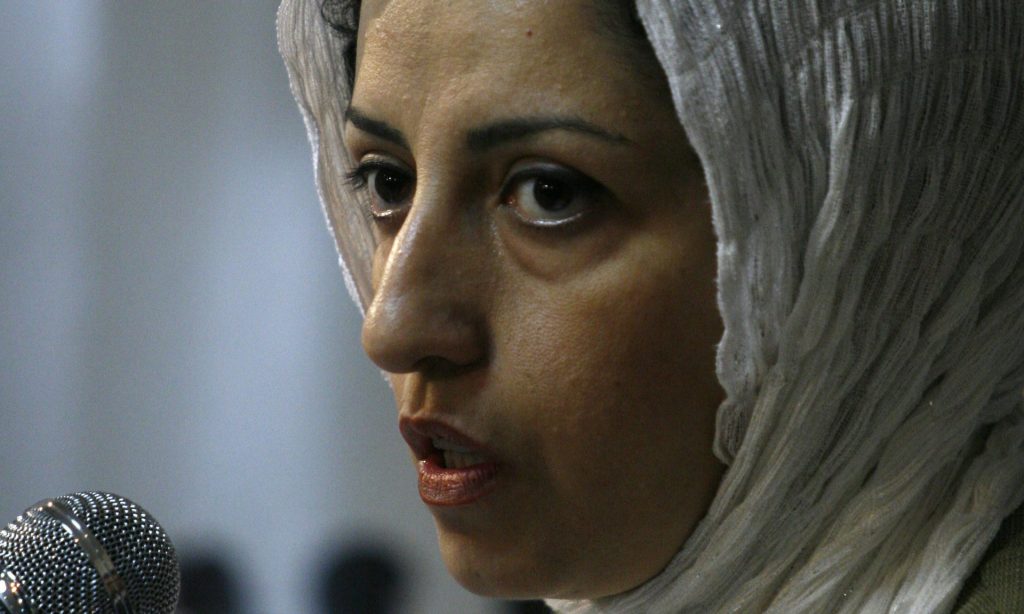From breaking down kitchen walls designed to separate women from men to ornately decorating domestic spaces – an architect has been mapping “signs of resistance” of Iranian women in their own homes.
On display at the United Arab Emirates’ Sharjah Architecture Triennial until Feb. 8, the work of Iranian-Australian architect Samaneh Moafi explores how Iranian women have carved out lives for themselves within the patriarchal structures around them.
One example, the architect said, was how several women she worked with for her “Parable of Mehr” (“compassion” in Farsi) project had removed a wall in their apartments that was designed to separate women in the kitchen from men in the living area.
“They showed their desire for a better life,” Moafi told the Thomson Reuters Foundation as she walked through the installation.
She also viewed the women elaborately decorating their homes – particularly practical, domestic spaces such as kitchens – as “signs of resistance”.
Moafi’s work takes its name from one of Iran’s largest public housing initiatives, built under former President Mahmoud Ahmadinejad.
The ambitious Mehr project was initiated in 2007 and sought to build 4 million housing units across the country, according to the Iranian Ministry of Roads and Urban Development.
But priority for the units was given to married men who were supporting a family and were unable to afford property otherwise, explained Moafi.
The architect pointed out that the Mehr buildings have few communal spaces, giving the women who live in them – often coming from disparate communities – little chance to interact.
That is why the custom-made household objects in her installation – displayed under green lighting typically used in Shi’ite Islam – are associated with particular rituals that cannot be performed alone, she explained.
They are designed to create kinship between women who live in the same buildings but “rarely speak to their neighbours or know what is going on outside,” said Moafi.

HOUSING CHALLENGES
Originally, the Mehr units were very affordable for those who qualified, Moafi explained.
Applicants could get a loan of up to 250 million rials ($6,000) without a deposit and that would cover more than half of the total price of the average Mehr apartment, she said.
Since President Hassan Rouhani came into power in August 2013, the new leader has heavily criticised the initiative, said Kevan Harris, an assistant professor of sociology at the University of California, Los Angeles.
Rouhani’s administration saw the project as a “big expense” and a key reason for inflation being pushed up to 40%, explained Harris, author of a book on politics and the welfare state in Iran.
Today still, housing pressures add to cost of living, one of the main grievances behind ongoing protests in the country, he added in emailed comments.
Hundreds of young and working-class Iranians took to the streets in November to protest against fuel price rises – which Moafi said have a “really serious effect” on residents of Mehr townships, which tend to be poorly connected to public transport.
A spokesman for the Ministry of Roads and Urban Development was not available to comment.
In December 2019, Iran’s Planning and Housing Economy Office reported that residential property in the capital Tehran cost more than 134 million rials (about $3,000), per square metre.
That puts housing out of reach for many in a country where the average monthly household income is less than 27 million rials ($640), according to government figures.
Rouhani’s new National Housing Project, which opened for enrolment in November, aims to incentivise the private sector to supply 400,000 affordable homes to the market by 2021, according to local media reports.
The plan is to avoid the perceived mistakes of Mehr by building each new home only when a willing and able buyer is ready to purchase the property, and by locating the homes in more accessible areas, reports said.
As for the Mehr housing project, the units that were completed are no longer subsidised and can be privately sold or rented.
Legally, the units are now available to anyone with the means to pay for them. But the patriarchal system on which the housing units were founded is still at work, Moafi said.
At the start of her project, the architect and her collaborators split into groups and asked estate agents about renting a unit in one of the Mehr apartment blocks in Pardis, a township near Tehran.
“The guy was, like, ‘Three single girls? I don’t think I can find anything for you,'” Moafi laughed.

RITUALS AND SOLIDARITY
When she first started her project and spoke to women who live in the Mehr homes today, Moafi noticed a lack of communication and solidarity between them.
Part of the reason for their isolation, she said, was that the women tended to stay inside their homes while men represented their families outside in the community.
“The women are all working class, but some are urban, some are from rural backgrounds, and they don’t really gel together,” said the architect.
So, as a test for her prototype “assembly of objects”, Moafi gathered some of the women in a Mehr car park in Isfahan to take part in a ritual known as nazri – a devotional practice which is carried out to solve a problem.
In this case, it involved cooking a labour-intensive dish called sholeh zard, a traditional Iranian saffron rice pudding.
It took the group 11 hours to make the dish, which Moafi says “is impossible to make alone in a large quantity,” as is done for a nazri. There were initially four women involved, with more joining in as they went.
The women all lived in the same area but most of them did not know each other, Moafi noted.
Still, while cooking the women worked together and spoke about their problems to the group, she added.
“It doesn’t mean that they’re all happy friends living together now,” Moafi said. “(But) a ritual is a break from day-to-day life.”
($1 = 42,000.0000 rials)

